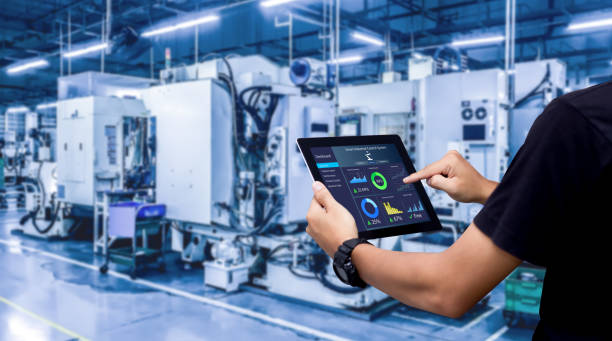Microproductivity: Redefining Efficiency in Industrial Settings
Microproductivity is reshaping operational efficiency in industrial environments. This innovative approach breaks complex tasks into smaller, manageable units, allowing for increased focus, reduced errors, and enhanced overall productivity. As businesses seek ways to optimize their processes, microproductivity emerges as a game-changing strategy with far-reaching implications for industrial operations and workforce management.

For instance, in a manufacturing plant, rather than assigning an employee to oversee an entire production line, microproductivity might involve breaking that role into several smaller tasks. One worker might focus solely on quality control at a specific stage, while another concentrates on optimizing a particular machine’s performance. This granular approach not only improves efficiency but also enhances job satisfaction by giving employees clear, achievable goals.
Historical Context and Industrial Evolution
The roots of microproductivity can be traced back to the early 20th century with Frederick Taylor’s scientific management principles. Taylor’s approach involved breaking down work processes into their smallest components to find the most efficient method. However, microproductivity takes this concept further by considering not just physical tasks, but cognitive processes as well.
In the 1980s and 1990s, the rise of lean manufacturing principles in Japan, particularly at Toyota, further emphasized the importance of small, continuous improvements. This philosophy, known as Kaizen, laid the groundwork for modern microproductivity practices. As industries became more complex and technologically advanced, the need for more nuanced approaches to productivity became apparent.
Implementing Microproductivity in Industrial Settings
Implementing microproductivity in an industrial environment requires a shift in both mindset and operational structure. The first step is to conduct a thorough analysis of current processes, identifying areas where tasks can be broken down into smaller, more manageable units. This might involve time-motion studies, employee interviews, and data analysis from production systems.
Once potential areas for microproductivity implementation are identified, the next step is to redesign workflows. This could involve creating new job roles, restructuring teams, or implementing new technologies to support more granular task management. For example, a chemical processing plant might break down its quality control process into several micro-tasks, each focused on a specific parameter or test.
Training is crucial in this phase. Employees need to understand not just how to perform their specific micro-tasks, but also how these tasks fit into the larger picture of production. This holistic understanding ensures that while workers focus on their specific responsibilities, they remain aligned with overall organizational goals.
Technology’s Role in Enhancing Microproductivity
Advancements in technology have been instrumental in making microproductivity more feasible and effective in industrial settings. Smart sensors, Internet of Things (IoT) devices, and advanced analytics platforms allow for real-time monitoring and adjustment of micro-tasks. For instance, in a smart factory, each workstation can be equipped with sensors that track performance metrics for specific micro-tasks, allowing for immediate feedback and optimization.
Augmented Reality (AR) and Virtual Reality (VR) technologies are also playing a significant role. These tools can provide workers with step-by-step guidance for complex micro-tasks, reducing the learning curve and minimizing errors. In a complex assembly line, for example, AR glasses could provide visual cues for each specific step of a worker’s micro-task, ensuring precision and consistency.
Measuring the Impact of Microproductivity
Assessing the effectiveness of microproductivity initiatives is crucial for continuous improvement. Key Performance Indicators (KPIs) need to be redefined to align with the more granular nature of micro-tasks. Traditional metrics like overall production output remain important, but new metrics focusing on the efficiency and quality of individual micro-tasks should be introduced.
Data analytics plays a crucial role in this measurement process. By collecting and analyzing data from each micro-task, industries can identify bottlenecks, optimize resource allocation, and make data-driven decisions to further enhance productivity. For instance, a food processing plant implementing microproductivity might track metrics like the time taken for each quality check, the accuracy of specific packaging tasks, or the efficiency of individual cleaning processes.
Practical Insights for Industrial Microproductivity
• Start small: Begin by identifying one area or process where microproductivity can be implemented as a pilot project.
• Involve employees: Engage workers in the process of breaking down tasks. They often have invaluable insights into how jobs can be optimized.
• Leverage technology: Utilize task management software and IoT devices to monitor and optimize micro-tasks.
• Focus on continuous improvement: Regularly review and refine micro-tasks based on data and employee feedback.
• Balance specialization with cross-training: While microproductivity encourages focus, ensure employees understand the broader context of their work.
As industries continue to evolve, microproductivity stands out as a powerful strategy for enhancing efficiency and quality. By breaking down complex processes into manageable units, businesses can achieve unprecedented levels of precision and productivity. While implementation requires careful planning and a shift in operational mindset, the potential benefits in terms of improved output, reduced errors, and increased employee engagement make microproductivity a compelling approach for forward-thinking industrial operations.





